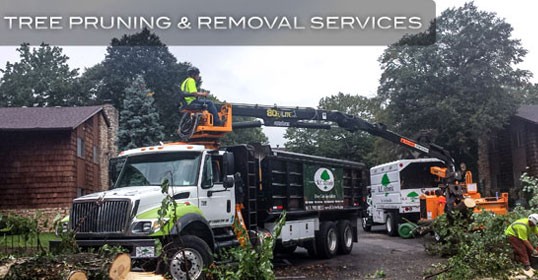Understanding the Relevance of Tree Preservation and Preservation Practices in Urban Areas
In the busy landscape of city atmospheres, trees frequently stand as quiet guardians, offering a multitude of benefits that prolong much beyond their visual charm. Recognizing the value of tree preservation and preservation practices in these areas is not merely an environmental factor to consider yet an all natural strategy to fostering sustainable and durable areas. As we check out the intertwined material of environmental, social, and financial advantages that urban trees supply, it becomes evident that their conservation is crucial for the well-being of future and present generations. Let us get started on a journey to reveal the vital function that trees play fit the metropolitan landscapes of tomorrow.
Ecological Advantages of Trees in Cities
Trees in city areas play an important duty in offering different environmental benefits, adding to the total well-being of city slicker. One significant advantage is the renovation of air high quality. Trees function as all-natural filters, taking in contaminants such as carbon monoxide gas, sulfur dioxide, and nitrogen dioxide, and launching oxygen into the environment. This process helps in reducing the focus of unsafe gases, making the air cleanser and healthier for residents.

Moreover, trees add to water monitoring by lowering stormwater overflow and dirt disintegration. Their origin systems soak up excess water, preventing flooding and filtering system pollutants prior to they get to water bodies. This all-natural procedure aids maintain water high quality and safeguards aquatic environments in urban areas. Generally, the ecological advantages of trees in cities are vital for developing sustainable and livable metropolitan settings.
Social Relevance of Urban Tree Conservation
In contemporary city landscapes, the conservation of trees holds substantial social importance for fostering community health and improving quality of life. Urban tree preservation plays an important function in producing rooms for social interaction and community involvement.

Economic Value of Tree Preservation
The conservation and conservation of metropolitan trees use significant economic benefits that add to the total economic well-being of cities and areas. Urban trees supply a large range of economic advantages that positively affect regional economic situations. One considerable financial benefit of tree preservation is the boost in home values. Trees enhance the aesthetic allure of neighborhoods, resulting in greater residential or commercial property worths and drawing in potential purchasers or lessees. City trees help reduce power costs by providing color in the summer season and acting as windbreaks in the wintertime, thus lowering the need for home heating and cooling down systems.
Furthermore, trees play a crucial duty in reducing stormwater drainage and minimizing the effects of flooding, which can lead to expense savings for cities in terms of facilities maintenance and repair service. Urban trees likewise add to enhanced air quality by releasing and soaking up pollutants see post oxygen, causing prospective cost savings in health care expenses associated with respiratory diseases. By spending and acknowledging in the financial worth of tree preservation, cities can advertise lasting growth, boost lifestyle, and produce more resilient city atmospheres.
Methods for Sustainable Urban Tree Monitoring
A thorough method to sustainable urban tree management entails weblink incorporating varied approaches that prioritize long-term environmental health and wellness and area well-being. Implementing tree inventories and evaluations is important to comprehend metropolitan tree populations, their health, and maintenance requirements.
Area interaction plays a critical role in sustainable urban tree administration. Informing residents regarding the advantages of trees, organizing tree growing occasions, and entailing volunteers in tree treatment tasks fosters a feeling of possession and stewardship. Cooperation between city government, ecological organizations, and citizens is essential to developing and applying effective tree monitoring strategies.
Purchasing green facilities, such as city forests and environment-friendly roofs, can give multiple advantages, including improved air quality, stormwater administration, and metropolitan heat island reduction. tree removal. Integrating trees right into urban preparation and design processes ensures that trees are valued as crucial elements of a healthy and balanced and resistant urban setting
Area Involvement in Tree Preservation
Neighborhood involvement is an essential component in promoting lasting city tree monitoring practices and ensuring the lasting wellness and preservation of metropolitan tree populations. Involving the neighborhood in tree preservation campaigns can cause enhanced awareness, gratitude, and stewardship of trees within metropolitan locations. When homeowners proactively join tree upkeep, growing, and conservation initiatives, they establish a feeling of possession and pride in their regional environment.
Area involvement also promotes social cohesion and collaboration among residents, neighborhood authorities, and environmental companies, promoting a shared duty for metropolitan tree conservation. By arranging tree planting events, academic workshops, and volunteer possibilities, areas can interact to boost the city tree canopy and create greener, healthier cities. Including locals in decision-making procedures concerning tree administration makes sure that varied perspectives and neighborhood understanding are thought about, leading to much more sustainable and efficient conservation practices. Eventually, neighborhood participation plays an important function in structure growing and resistant metropolitan woodlands for future generations to delight in.
Final Thought
Finally, metropolitan tree preservation and conservation practices play a crucial function in enhancing the environmental, social, and economic wellness of cities. By acknowledging the worth of trees in metropolitan locations and implementing lasting management strategies, neighborhoods can enjoy the countless my link benefits that trees offer. It is crucial for stakeholders to actively participate in tree conservation efforts to guarantee a greener and much healthier metropolitan atmosphere for current and future generations.
